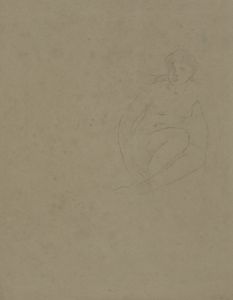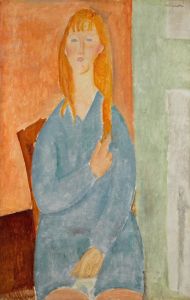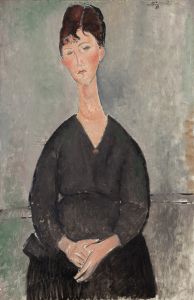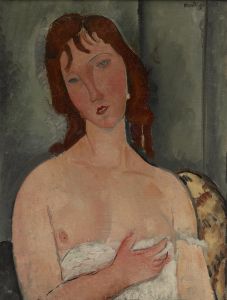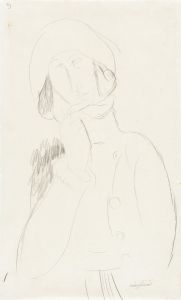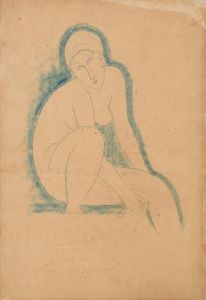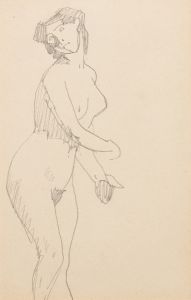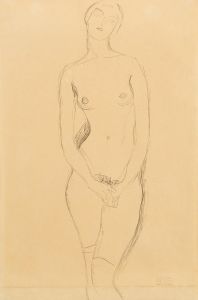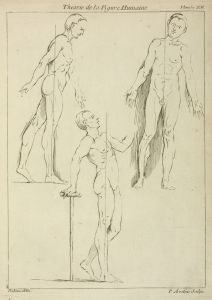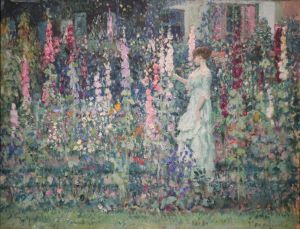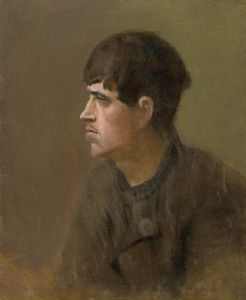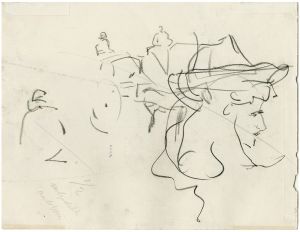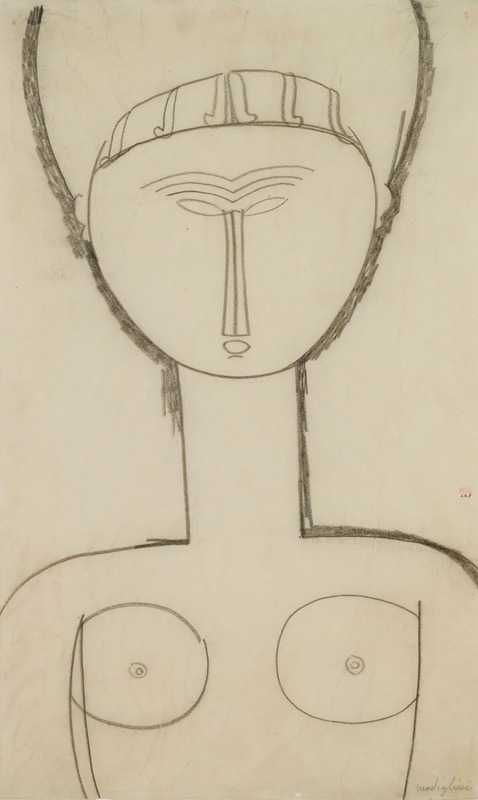
Cariatide, vue de face, demi-figure
A hand-painted replica of Amedeo Modigliani’s masterpiece Cariatide, vue de face, demi-figure, meticulously crafted by professional artists to capture the true essence of the original. Each piece is created with museum-quality canvas and rare mineral pigments, carefully painted by experienced artists with delicate brushstrokes and rich, layered colors to perfectly recreate the texture of the original artwork. Unlike machine-printed reproductions, this hand-painted version brings the painting to life, infused with the artist’s emotions and skill in every stroke. Whether for personal collection or home decoration, it instantly elevates the artistic atmosphere of any space.
Amedeo Modigliani, an Italian painter and sculptor, is renowned for his distinctive style characterized by elongated forms and faces. One of his works, "Cariatide, vue de face, demi-figure," is a notable example of his exploration of the caryatid theme, which he revisited multiple times throughout his career. This particular piece is a painting that reflects Modigliani's fascination with the human form and his unique approach to portraiture.
Modigliani was born on July 12, 1884, in Livorno, Italy, and he moved to Paris in 1906, where he became part of the vibrant artistic community in Montparnasse. His work was influenced by a variety of sources, including African art, ancient Greek and Egyptian art, and the work of other contemporary artists like Pablo Picasso and Constantin Brâncuși. Modigliani's caryatids, which are sculptural figures used as architectural supports, were inspired by his interest in classical antiquity and non-Western art forms.
"Cariatide, vue de face, demi-figure" is one of several paintings and drawings Modigliani created that depict caryatids. These works often feature elongated necks and simplified, mask-like faces, which are characteristic of Modigliani's style. The painting is executed with a sense of elegance and grace, capturing the essence of the caryatid as both a structural and decorative element.
Modigliani's caryatids are notable for their departure from traditional representations. Instead of serving a purely architectural function, they become subjects of artistic exploration, embodying Modigliani's interest in the human figure and its expressive potential. The artist's use of line and form in "Cariatide, vue de face, demi-figure" demonstrates his ability to convey emotion and character through minimalistic yet powerful imagery.
Throughout his career, Modigliani struggled with health issues and financial difficulties, which were compounded by his bohemian lifestyle. Despite these challenges, he remained dedicated to his art, producing a significant body of work that includes portraits, nudes, and sculptures. His unique approach to portraiture, characterized by its stylized forms and emotional depth, has left a lasting impact on the art world.
Modigliani's work was not widely recognized during his lifetime, and he only achieved significant fame posthumously. He passed away at the young age of 35 on January 24, 1920, in Paris, due to complications from tuberculosis. Today, Modigliani is celebrated as one of the most important artists of the early 20th century, and his works are highly sought after by collectors and museums worldwide.
"Cariatide, vue de face, demi-figure" exemplifies Modigliani's innovative approach to traditional themes and his ability to infuse classical subjects with modern sensibilities. The painting remains an important part of Modigliani's oeuvre, reflecting his enduring fascination with the human form and his contribution to the development of modern art.





